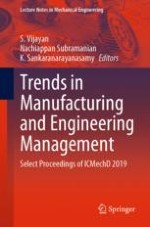2021 | OriginalPaper | Chapter
Experimental Investigation on Heat Pipe-Assisted Cooling During Milling Process of AISI 1040
Authors : I. Kantharaj, D. J. Hiran Gabriel, Julius Benedict Prakash, S. Mohanasundaram
Published in: Trends in Manufacturing and Engineering Management
Publisher: Springer Singapore
Activate our intelligent search to find suitable subject content or patents.
Select sections of text to find matching patents with Artificial Intelligence. powered by
Select sections of text to find additional relevant content using AI-assisted search. powered by
